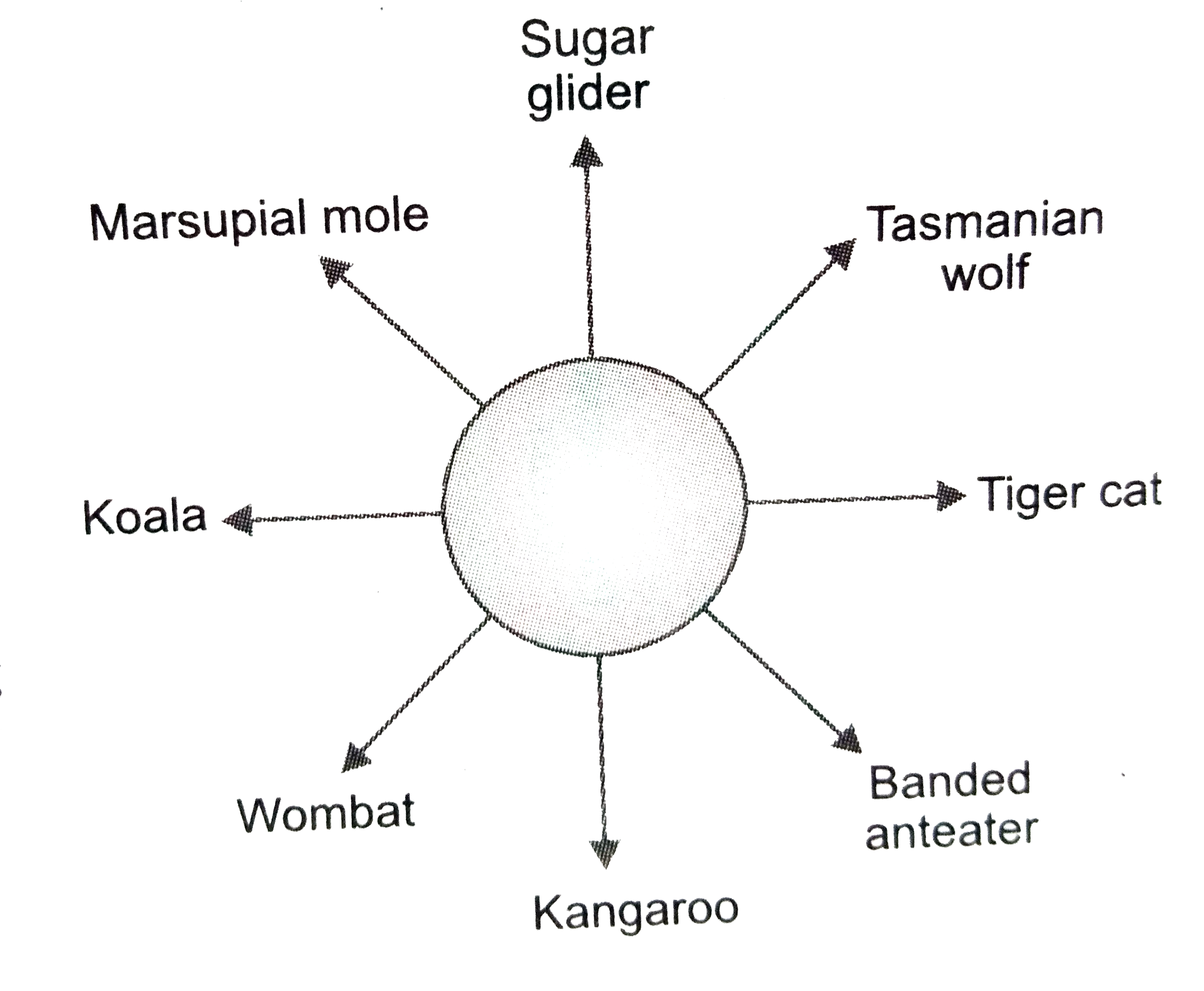Placental wolf and Tasmanian wolf marsupial exhibit
Adaptive radiation
Divergent evolution
Convergent evolution
Homology
The correct Answer is:C
Step-by-Step Solution:
1. Understanding the Organisms: The placental wolf (a placental mammal) and the Tasmanian wolf (a marsupial) are two different types of mammals that have evolved in different ways. The placental wolf gives birth to fully developed young, while the Tasmanian wolf gives birth to underdeveloped young that continue to develop in a pouch.
2. Identifying Their Origins: The placental wolf and the Tasmanian wolf have different evolutionary origins. This means that they come from different ancestral lines and have evolved separately over time.
3. Examining Their Habitats: Despite their different origins, both types of wolves occupy similar ecological niches or habitats. They have adapted to similar environmental conditions and fulfill similar roles in their ecosystems.
4. Recognizing the Evolutionary Concept: Since these two species have evolved independently but developed similar traits due to occupying the same habitat, this is an example of convergent evolution. Convergent evolution occurs when unrelated species develop similar adaptations in response to similar environmental challenges.
5. Evaluating Other Options:
- Adaptive Radiation: This refers to the diversification of a group of organisms into forms filling different ecological niches, which does not apply here.
- Divergent Evolution: This occurs when two or more related species become more dissimilar over time, which is not the case for these two wolves.
- Homology: This refers to traits inherited from a common ancestor, which does not apply since the two wolves do not share a recent common ancestor.
6. Conclusion: Therefore, the correct answer is that the placental wolf and the Tasmanian wolf exhibit convergent evolution.
Final Answer: The placental wolf and Tasmanian wolf exhibit convergent evolution.
---
- Adaptive Radiation: This refers to the diversification of a group of organisms into forms filling different ecological niches, which does not apply here.
- Divergent Evolution: This occurs when two or more related species become more dissimilar over time, which is not the case for these two wolves.
- Homology: This refers to traits inherited from a common ancestor, which does not apply since the two wolves do not share a recent common ancestor.
Topper's Solved these Questions
- EVOLUTIONBook:AAKASH INSTITUTE ENGLISHChapter:EVOLUTIONExercise:ASSIGNMENT SECTION-A OBJECTIVE TYPE QUESTIONS
Explore 93 Videos
- EVOLUTIONBook:AAKASH INSTITUTE ENGLISHChapter:EVOLUTIONExercise:SECTION-B OBJECTIVE TYPE QUESTIONS
Explore 30 Videos
- EVOLUTIONBook:AAKASH INSTITUTE ENGLISHChapter:EVOLUTIONExercise:TRY YOURSELF
Explore 29 Videos
- ENVIRONMENTAL ISSUESBook:AAKASH INSTITUTE ENGLISHChapter:ENVIRONMENTAL ISSUESExercise:ASSIGNMENT SECTION D
Explore 15 Videos
- EXCRETORY PRODUCTS AND THEIR ELIMINATIONBook:AAKASH INSTITUTE ENGLISHChapter:EXCRETORY PRODUCTS AND THEIR ELIMINATIONExercise:SECTION D ( ASSERTIN-REASON TYPE QUASTION)
Explore 10 Videos
Similar Questions
A: Placental wolf and Tasmanian wolf (a marsupial) show convergent evolution.
R: Like marsupials placental mammals in other parts of world also exhibit adaptive radiation in evolving into varieties of such placental mammals each of which appears to be similar to a corresponding marsupial.
View SolutionGive reasons
Placental wolf and Tasmanian wolf exist-sharing the same habitat.
View SolutionExplain giving reasons the existence of Placental wolf and Tasmanian wolf sharing the same habitat.

View SolutionStudy the figures below and answer the following :
(a)Mention the specific geographical region where these organisms are found.
(b)Name and explain the phenomenon that has resulted in the evolution of such diverse species in the region.
(c )Explain giving reasons the existance of placental wolf and Tasmanian wolf sharing the same habitat.

View SolutionMention the specific geographical region where these organisms are found.
Name and explain the phenomenon that has resulted in the evolution of such diverse species in the region.
Explain giving reason the existence of placental wolf and Tasmania wolf sharing the same habitat.
View SolutionLand of Marsupials is
View Solution(i) Identify any two marsupials from the list given below: (a) Lemur (b) spotted cuscus (c) Flying phalanger (d) bobcat (e) tasmanian wolf (f) mole (ii) Australian marsupials exhibit adaptive radiation." Justify the statement.
View SolutionSelect the incorrect match w.r.t. placental mammals and Australian marsupials.
View SolutionTasmanian wolf and placental wolf appear similar due to
View Solutionthe Tasmanian wolf( a marsupial) and American Timber wolf (a placental) may have evolved along similar lines because of similar selection pressure acting on similar gene pools. if so there an example of
View Solution